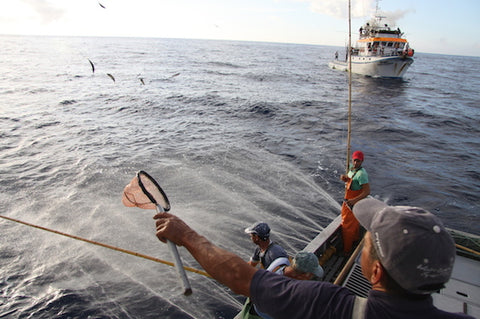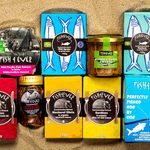You have no items in your shopping cart.

Fishing is complicated and over the years we’ve learnt not to generalise. If you’re looking for the right partners in this industry, it’s always a bit like a detective story – you need to go into the detail. Of course, there are general rules, tell-tale guidelines or signposts which are supposed to help with the decision, but ultimately it always comes down to asking the right questions.
Our approach is like detective work: we go into the nitty gritty by asking who, what, where and how. We have an internal fishery approval traffic light system which acts as our decision-making tree with over 40 questions covering environmental, social, political and quality criteria. We also give a number score, but this is not as significant as the traffic light system which will flag up red lines as well as potential dangers to watch out for. When it finally comes to the decision-making our rule is simple: no red lights and no more than 4 orange lights. Thus, our criteria are supposed to be as objective or as neutral as possible.

To ensure our choices are as good as possible we are extremely strict on fishing methods only allowing highly targeted and selective fishing gear. We are automatically pre-selecting for very low by-catch with low discard rates, no negative impact on endangered species and the sea bottom and a negligible impact on the wider eco-system. We also specify that boats must be owned by companies or individuals that are local to the fishing ground that is been exploited. In this way, we make sure our fishing is socially responsible and approved by the political systems in place of the coastal communities that are adjacent to the fishing.
small boats vs. big boats
It’s not always the case that small boats are better than big boats. And NOT all industrial boats are fishing unsustainably.
Larger boats can provide better accommodation for their crews and are more sea- worthy in rough seas or for more distant fishing. There are also a number of cases where larger boats are not fishing in conflict with smaller local boats. But in each individual case, we need to look at the details again and do our detective work by asking: who, what, where and how.

What our system does is that it de-emphasises the health of the total fish stock. By ensuring our fishing is socially responsible, well controlled legally and using targeted methods, we can’t be upended either by the fact that other boats have or are overfishing a specific stock or that certain indicators are pointing to a state of overfishing. Through our sophisticated decision-making system and also through our traceability system, we are completely honest and transparent about the state of the stocks and why we have made a certain decision. In this way, we always fulfil our responsibility to the environment, local communities and our promise of quality.













